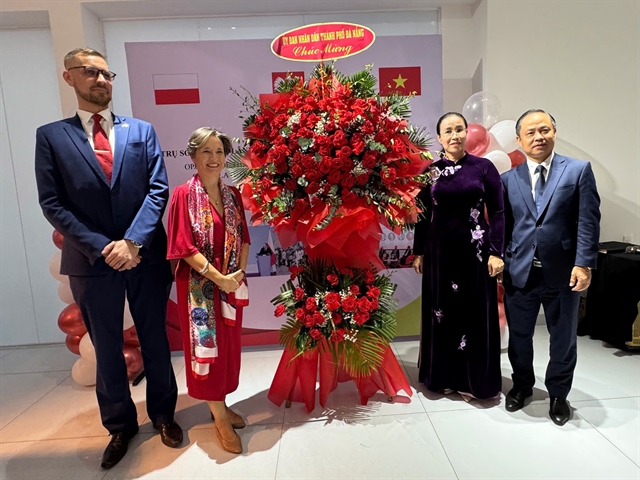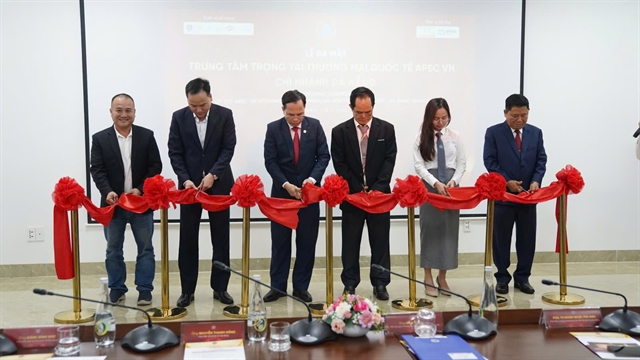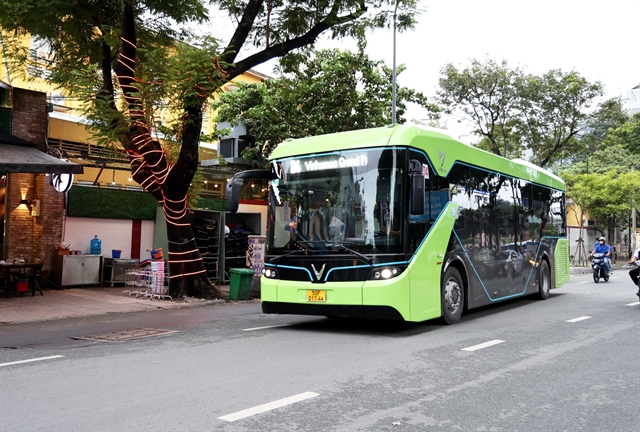 Environment
Environment
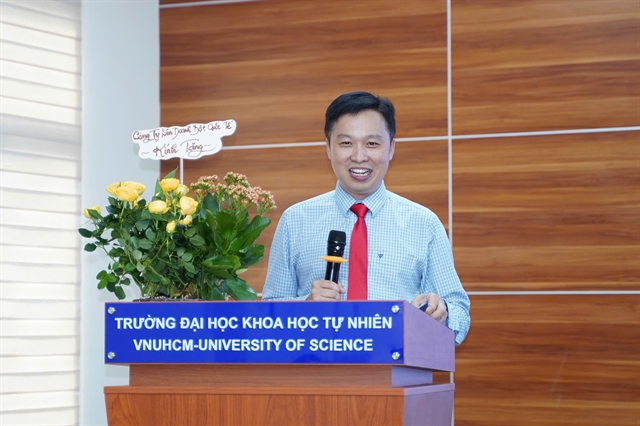
Central Việt Nam's first forest school has been launched in Sơn Trà Nature Reserve to provide an outdoor education site for school students in the central city of Đà Nẵng.
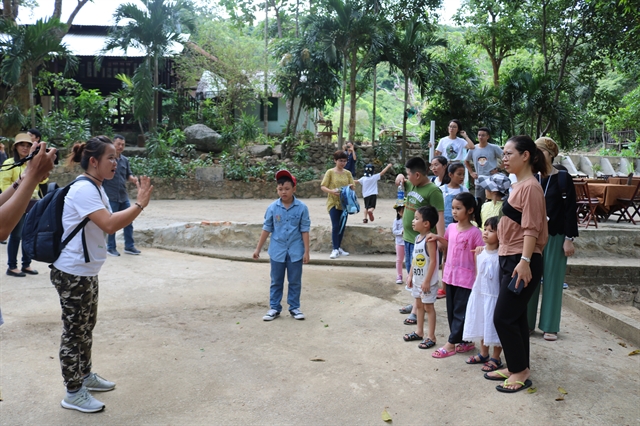
|
| Kids join the first course on nature education at the forest school at Sơn Trà Nature Reserve in Đà Nẵng. — VNS Photo Hương Quỳnh |
ĐÀ NẴNG — Central Việt Nam's first forest school has been launched in Sơn Trà Nature Reserve to provide an outdoor education site for school students in the central city of Đà Nẵng.
The head of the school, biologist Nguyễn Thị Tịnh, said the school was built on the boundary of the 78ha eco-tour site in the reserve. It will offer education on biodiversity, firsthand experiences with forest research and outdoor skills and a chance to explore the lifestyle of the area's endangered red-shanked douc langurs.
Tịnh said it is the first such forest school in central Việt Nam to offer valuable experiences and lessons for young students.
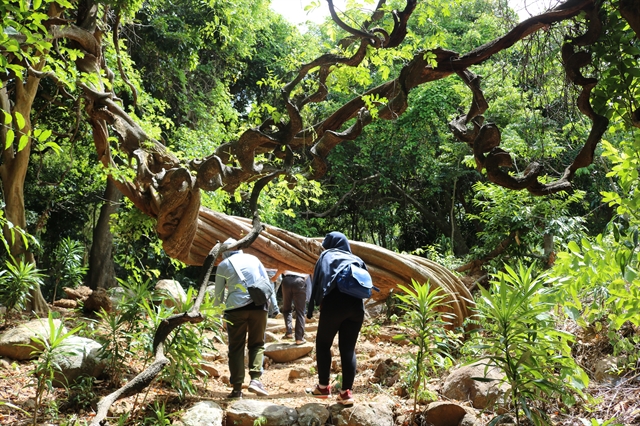
|
| Visitors explore the primary forest in the Sơn Trà Nature Reserve. The site is an ideal place for the nature education centre for school students. — VNS Photo Hương Quỳnh |
She said the educational programmes will include field trips in the jungle, observing the langurs and research on the area's flora and fauna starting in late August.
“We hope that school students will fall in love with the forest and wildlife as well as natural experiences," Tịnh said. "The centre also plans to provide forest bathing for nature lovers and tourists in the future."
“We offer courses for groups of 26 school students for each trip. The programme targets building up young generations with love of nature and a responsibility for forest restoration and wildlife protection.”
The centre, in middle of the forest 11km from the city centre, will also host wildlife study, painting, environment clean-ups and tree planting activities.
Last year, the city’s education and training department, in co-operation with the Centre of Biodiversity Conservation and NGO GreenViet, introduced the Sơn Trà Nature Education Centre – an exhibition and museum centre focused on the fauna and flora of the nature reserve on Sơn Trà Peninsula.
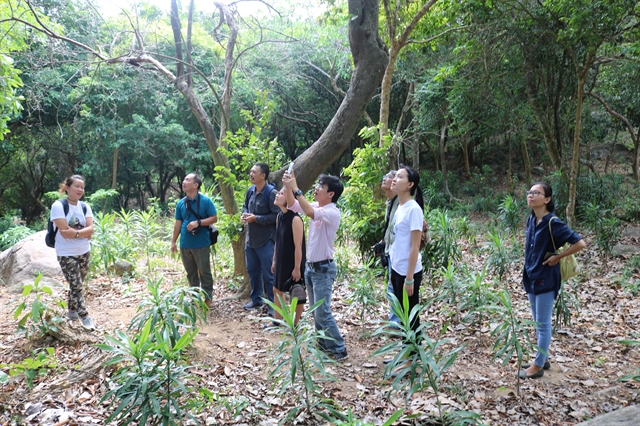
|
| Visitors join on a jungle walk in Sơn Trà Nature Reserve. Đà Nẵng is the first city in central Việt Nam to introduce a forest school for students and visitors. VNS Photo Hương Quỳnh |
According to the city’s education and training department, more than 25,000 school students and 3,000 local residents have participated in nature awareness education activities and field trips in the jungle.
The reserve, which covers 4,400ha, is home to more than 1,300 red-shanked douc langurs and more than 1,000 plant and 370 animal species.
The reserve hosts at least 10,000 visitors per month.
Tourists asked not to feed wildlife on Sơn Trà Peninsula
Authorities in the central city of Đà Nẵng have warned tourists not to feed local monkeys.
During the recent peak tourist season, a herd of wild monkeys have been frequently spotted to gather at the landfill behind Linh Ứng Pagoda on Sơn Trà Peninsula, scavenging for food, even when environment workers are present to burn the trash.
For a long time, tourists have used candies and fruits and other types of food to lure these monkeys into a position where they can be photographed.
Nguyễn Văn Hùng, a local street vendor, said the monkeys got used to being fed and began "asking" for food or agressively stealing it from tourists, sometimes causing quite a scene on the road which might result in accidents.
“They continue giving food to monkeys despite my warnings,” he said.
Researchers say that by feeding the wild animals, tourists have changed their living habits. From searching for food in their natural habitat, some monkeys have switched to food meant for human, which is not really good for their digestive system.
Ecologist Hà Thăng Long, founder of NGO Green Việt, said that in addition to the negative impact on the monkeys, direct contact between humans and wild animals increases the risk of diseases for both sides.
Dương Thị Xuân Liễu, head of the Tourism Management and Operation Department under the Management Board of Sơn Trà Peninsula and Đà Nẵng beaches, said the board had put up signs discouraging people from feeding the animals and urged tour operators and transport providers to warn tourists against such practices.
However, due to poor management and the lack of a mechanism to punish those who feed the monkeys, the situation has not seen much improvement.
In 2015, two tourists were hospitalised after being attacked by monkeys on Sơn Trà Peninsula.
Tourists are recommended to keep themselves safe and preserve the natural habitat for local wildlife by keeping their distance from wild animals. — VNS

